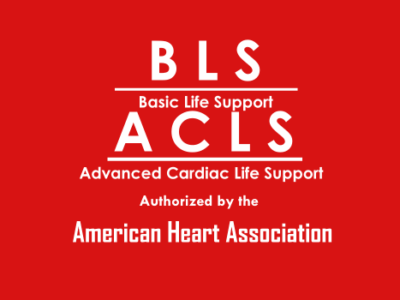my abroad career consultant BLS ACLS-AHA Certificate
BLS ACLS-AHA Certificate
Book Classes and get BLS-ACLS-AHA-Certificate

BLS(Basic life support)
- Basic life support (BLS) refers to a set of essential emergency procedures designed to sustain life in individuals experiencing cardiac arrest, respiratory failure, or other life-threatening conditions.
- BLS techniques include recognizing and responding to emergency situations, calling for help, performing cardiopulmonary resuscitation (CPR), using automated external defibrillators (AEDs), and providing basic airway management and breathing assistance. BLS is typically provided by trained medical professionals or bystanders until advanced medical care can be obtained.
What is the importance of knowing BLS?
- Performing CPR and using an AED are essential procedures to help sustain someone’s life until professional medical help arrives. BLS skills can mean the difference between life and death in critical situations, and having this knowledge can give you the confidence to take action and potentially save a life.
- This article will cover many topics around BLS, but it may be best to get more information on getting BLS/CPR/AED Certified.
What are the 5 Steps to a BLS Assessment? When should it be used?
- Assess scene safety before performing CPR.
- It is essential to evaluate the area for potential dangers such as debris, shrapnel, or hazardous materials before initiating CPR. Ensuring scene safety before starting CPR will prevent injuries to you, the patient, and any bystanders.
Check the patient’s airway, breathing, and circulation.
- After determining that the area is safe, the next step is to assess the patient’s airway, breathing, and circulation.
- Check for any signs of breathing or a pulse. If the patient is not breathing or has no pulse, start CPR immediately.
Call for professional help (EMS).
- It is crucial to activate the emergency medical services (EMS) system as soon as possible to ensure that professional help arrives on the scene.
- You can call the emergency number in your area and follow the instructions provided by the dispatcher.
Use an AED if available and follow its instructions.
- If an AED is available, it should be used as soon as possible. AEDs are user-friendly and provide voice prompts and visual cues to guide you through the process.
- Follow the AED’s instructions carefully and promptly to ensure the best chance of a successful outcome.
Perform CPR.
- Chest compressions are an essential part of CPR, and they help circulate blood to the brain and other vital organs.
- When performing chest compressions, ensure that the patient is lying on their back on a firm surface, place your hands on their chest, and press down about two inches at a rate of 100-120 compressions per minute.
- After 30 compressions, give two rescue breaths and repeat the cycle. Follow the proper speed and cadence to increase the chances of a successful outcome.
Frequently Asked Questions about BLS
Who should learn BLS?
- BLS is a critical skill that can be learned by anyone, including healthcare professionals, first responders, lifeguards, teachers, coaches, and anyone else who may find themselves in a situation where they need to provide lifesaving care.
How do I get certified in BLS?
- Certification in BLS can be obtained through courses offered by organizations such as the American Heart Association (AHA) and the American Red Cross.
- These courses typically include hands-on training in CPR, AED use, and other basic life support techniques.
Is BLS different from first aid?
- Yes, BLS is a specialized form of first aid that involves providing immediate care to someone who is experiencing a life-threatening emergency.
- First aid, on the other hand, is a broader term that refers to any medical care provided to someone before professional medical help arrives.
Can I be held liable if I perform BLS incorrectly?
- Good Samaritan laws provide legal protection for individuals who provide emergency medical care in good faith, but they may vary from state to state.
- However, if you are trained in BLS and provide care that is outside of your scope of practice or training, you may be held liable for any harm that results from your actions.
How effective is BLS in saving lives?
- BLS can be highly effective in saving lives when it is administered quickly and correctly.
- When performed properly, CPR and AED use can help maintain vital blood flow to the heart, brain, and other organs until professional medical help arrives, which can significantly increase the chances of a successful outcome in a cardiac emergency.
ACLS(Advanced Cardiovascular Life Support)
- The AHA’s ACLS course builds on the foundation of lifesaving BLS skills, emphasizing the importance of continuous, high-quality CPR. Reflects science and education from the American Heart Association Guidelines Update for CPR and Emergency Cardiovascular Care (ECC).
Which course is right for me?
ACLS or ACLS for Experienced Providers
ACLS:
- For healthcare professionals who either direct or participate in the management of cardiopulmonary arrest or other cardiovascular emergencies and for personnel in emergency response
What does this course teach?
- Basic life support skills, including effective chest compressions, use of a bag-mask device, and use of an AED
- Recognition and early management of respiratory and cardiac arrest
- Recognition and early management of peri-arrest conditions such as symptomatic bradycardia
- Airway management
- Related pharmacology
- Management of ACS and stroke
- Effective communication as a member and leader of a resuscitation team
Advanced Cardiovascular Life Support (ACLS) Course Options
ACLS for Experienced Providers:
- For those who are proficient in performing BLS and ACLS skills, reading and interpreting ECGs, understanding ACLS pharmacology; and who regularly lead or participate in emergency assessment and treatment of prearrest, arrest, or postarrest patients
What does this course teach?
- Demonstrate proficiency in providing BLS care, including prioritizing chest compressions and integrating use of an AED
- Recognize and manage respiratory arrest
- Recognize and manage cardiac arrest until termination of resuscitation or transfer of care, including post–cardiac arrest care
